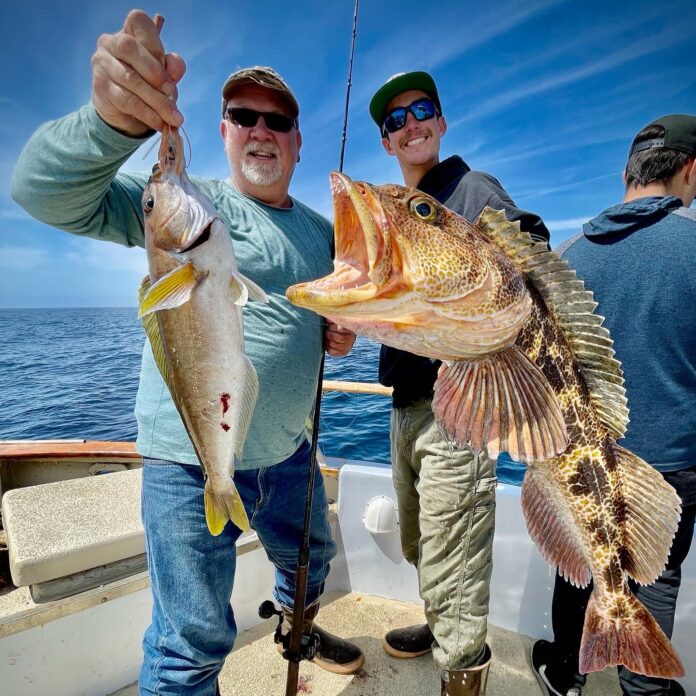
1 HIT ROCK BOTTOM
A trait of many rockfish species is their love of hugging the bottom, often retreating deep into nooks and crannies to stay out of the gaze of hungry predators. Thus, if you’re bait and rig isn’t hard on the bottom – or damn close – you might well be out of the bite zone.
The best rockfish anglers will opt for a slightly heavier sinker or lure than the average angler to keep their bait and rig precisely in this zone whilst drifting, when a small sinker would be prone to working its way up the water column as the boat moves.
Don’t be afraid of dropping 10, 12 and even 16-ounce sinkers when conditions dictate. Your ability to hold a bait or lure near the bottom and in this strike zone is heavily dictated by your sinker choice.
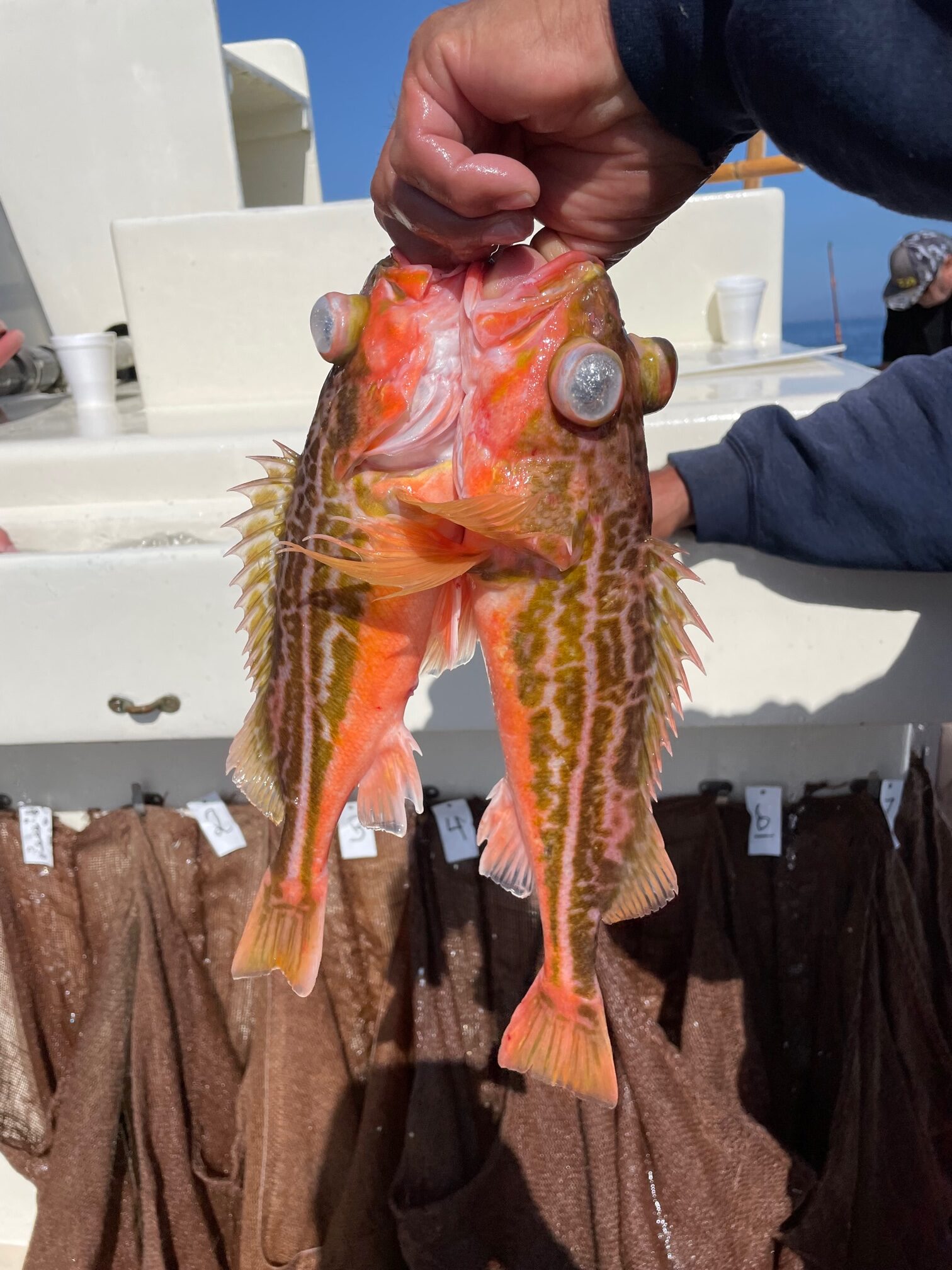
The way to tell if you’ve hit bottom is through feeling the sinker hit rocks or reef through the rod. The ‘tap’ or ‘bang’ sensation as it does so is pretty obvious. Assuming you’re drifting, every minute or so, just check you’re on or near the bottom by letting out some line or dropping the rod tip until you feel that ‘tap’ again.
This way you know your bait or lure is in the zone. We see lots of beginner rockfish anglers not paying attention to this factor, and after a few minutes of drifting, their rig ends up dozens of feet off the bottom and out of the zone.
2 DON’T USE SPINNING TACKLE…
It’s tempting to try and make do with a basic spinning combo if you don’t have a specific rockfish combo. That rental rod and reel can look like a nice deal at the landing, right? Pinch yourself and consider cranking up a 12-ounce sinker several hundred feet on such a combination. It won’t be a comfortable experience, trust us. It’ll cost you fish too.
You’re far better served with even the most basic conventional combo – rented, begged, borrowed or purchased – than almost any sort of spinning combo for targeting anything but the shallowest of shallow water rockfish.
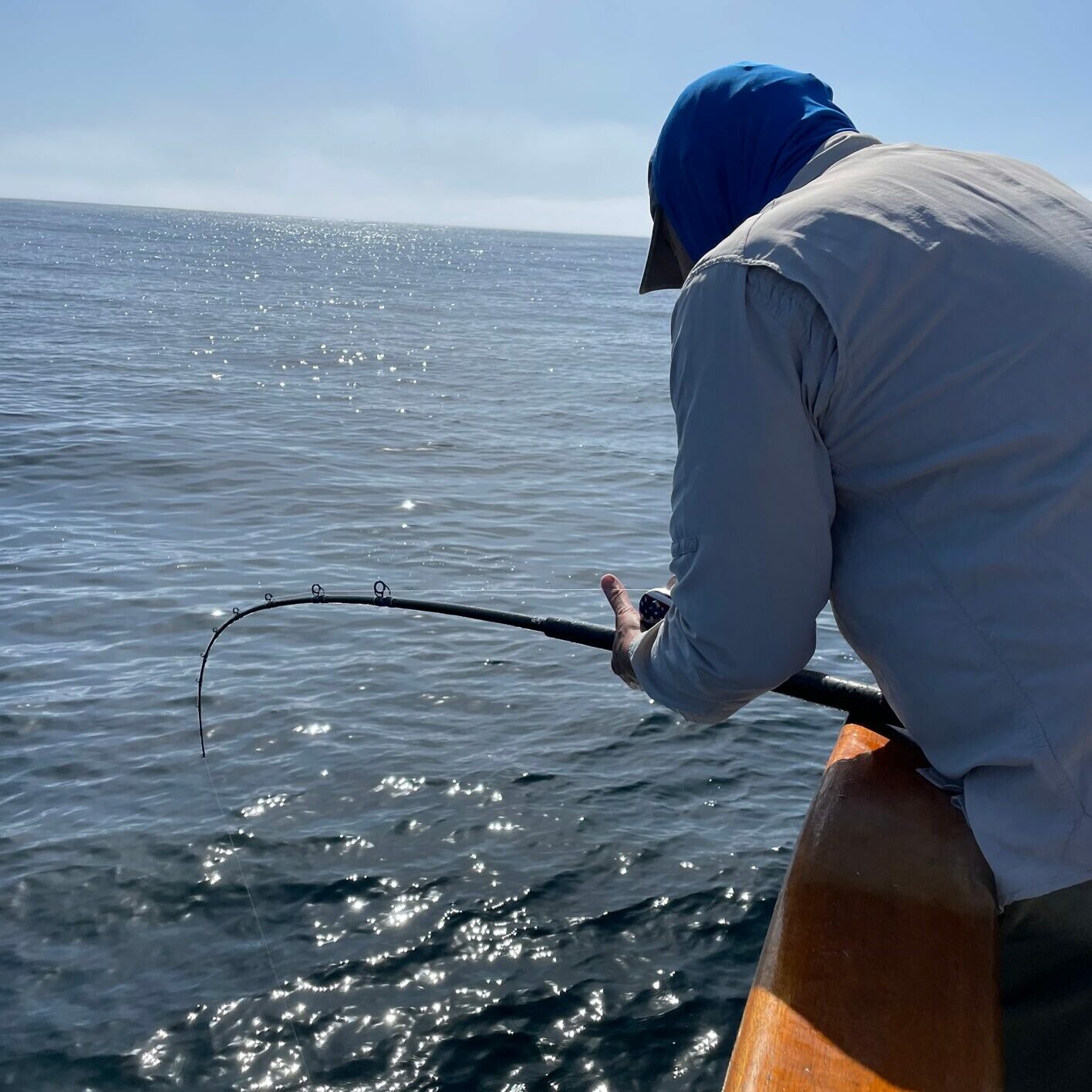
Mechanically, the process of reeling a fish and big sinker up from the depths is far better achieved with a good quality conventional reel with a gear ratio around the 6:1 mark or better. A two speed model is even more desirable, especially when it comes to bringing a big lingcod or similar to the gaff.
3 BUT DO USE BRAID MAIN LINE & MONO TOP SHOTS!
Heavy mono main lines with lots of stretch have no place deep dropping in hundreds of feet for rockfish. The extra surface area of the mono versus the much thinner braid main line will require a bigger sinker to hold your rig near bottom and that roughly 20% stretch is not your friend when it comes to stopping a trophy lingcod or big red from heading back into its cave once hooked.
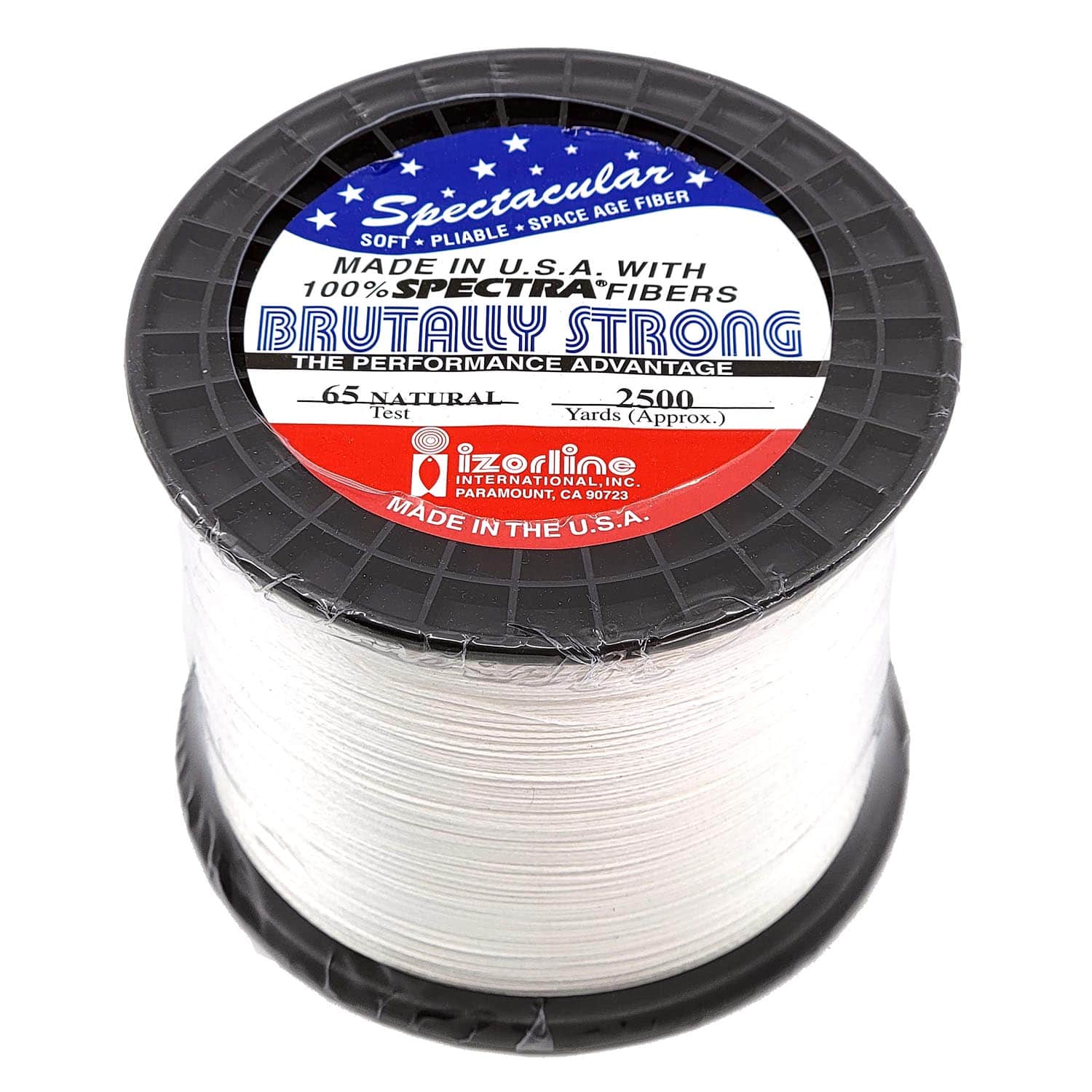
A short 20-foot topshot of tough mono does add some security against being broken off around structure plus that little bit of stretch is a good thing for tackling big fish. You just don’t want hundreds of feet of stretchy, heavy mono between you and the rig but a short top shot (or rubbing leader) is recommended. Braid main line in the 30 to 60-pound range and a short mono top shot is the way to go.
4 SQUID HEADS AND BIG HOOKS TO AVOID DINKS
Being selective about what you crank up from the depths is a consideration. Do you want to be reeling up double shots of micro rockfish that won’t make it back to the bottom once unhooked? Or course not. But if you drop small strips of squid on size 1/0 hooks and double dropper loops to the bottom of many healthy rockfish fisheries, that’s what you’ll likely hook up on.
One way of being a bit more selective is go bigger with the bait and hook size. Rather than strips of squid, try heads, or half or a whole mantle on a 4/0 hook or bigger. A good size rockfish will have no problem in inhaling the whole lot, but those dinky specimens won’t be able to hook themselves as easily. More taco fillets, less wastage.
5 LIVE BAIT RULES FOR LINGCOD
Time and again on our WON charters, we see lingcod caught on either livebaits or grabbing onto hooked fish all the way to the surface. They’re clearly highly attuned to ambushing live prey that can’t get away.
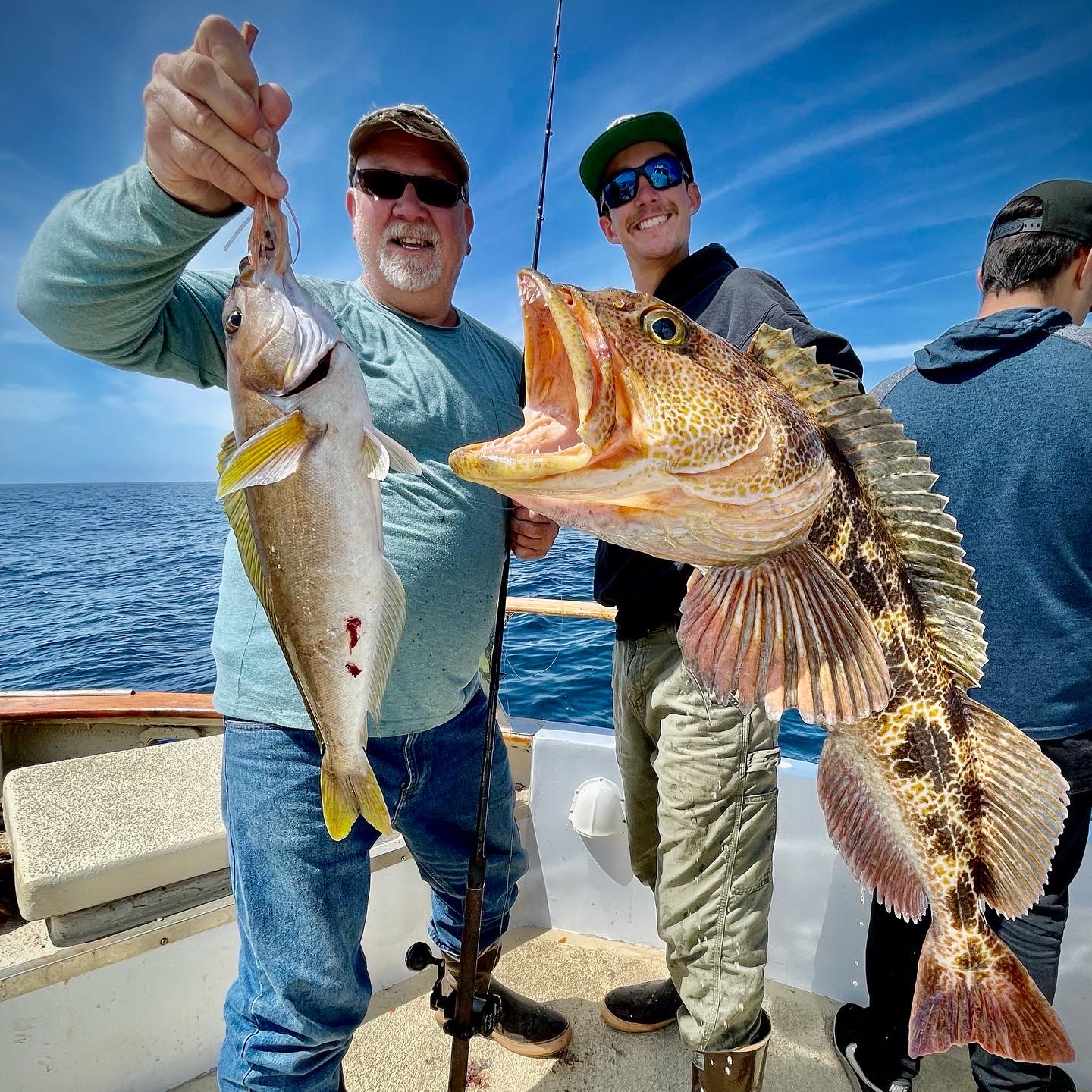
So, if your heart is set on a WON-worthy specimen rockfish or lingcod, go for something big and lively as bait. Ignore the tank of sardines or anchovy, and either wait until someone pulls up an unwanted mackerel, small whitefish, sanddab or unwanted small rockfish, or drop a sabiki rig yourself to score a perfect livebait.
Once the bait has been acquired, grab your stinger (or trap) rig – consisting of a single dropper loop made from heavy fluorocarbon and a big treble hook at the end of the loop with a single J hook 6 inches or so up the loop. The J hook goes through the lip – the treble in the saddle, flank or tail of the bait. Add a big sinker and slowly descend the offering into the rocky depths, where Mr Lingcod will only be too happy to help himself to an easy meal…
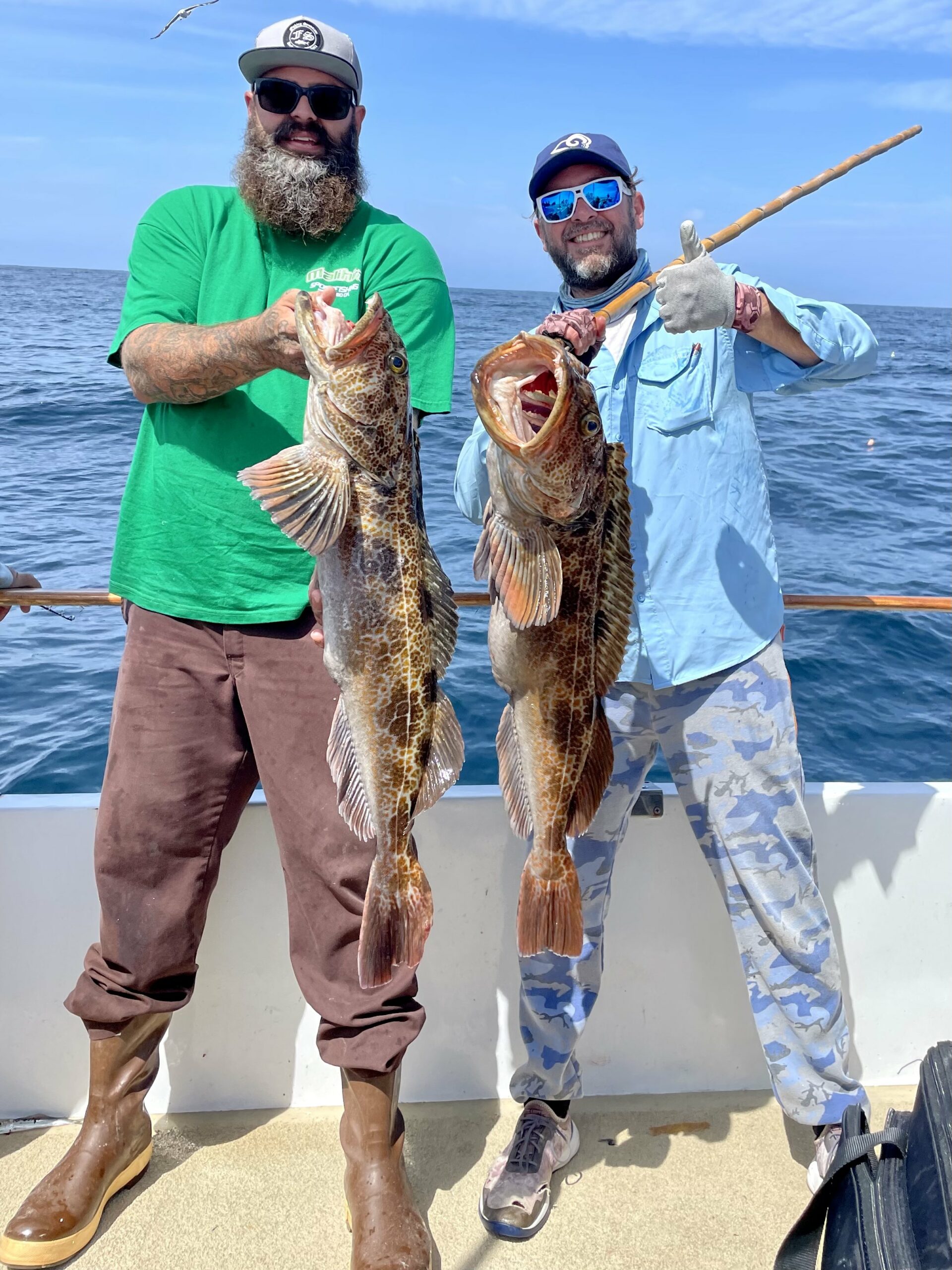
This report appears in the March 17, 2023 print edition of Western Outdoor News. To get early access to every info and feature-packed issue of the West Coast’s biggest outdoor sporting newspaper, click here.



